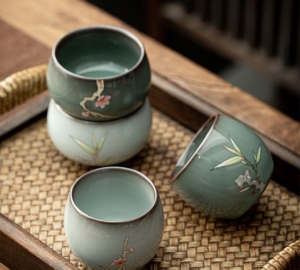Many people are aware of the harmful effects that the fumes from paint can bring about when inhaled in significant volumes. Sure, we already have scent-free paint, but are they truly harmless or are the harmful fumes simply masked by something else?
Whichever the answer, there are some people who are simply difficult to convince and they would rather err on the side of safety. So, it’s for these people for whom toxic-free paint alternatives are made. Besides, there’s nothing wrong with seeking a certain degree of peace of mind.

We have alternatives such as earth pigments, which are derived from naturally-occurring minerals that have undergone a certain degree of oxidation, such as the products available from the Real Milk Paint Co. One such product comes in the form of Tung oil. Tung oil, in particular, is one of the best alternatives to paint as it is water-resistant, food-safe, and mold-resistant. It’s also easy to use, but if you’re still unsure of how to use it, here’s a guide for you: Pure Tung Oil: A Beginner’s Guide | Tips for Using Tung Oil.
Now, you have to understand that there are different types of non-toxic paints and finishes. “Non-toxic” is a broad term that wrongfully suggests that paints are either toxic or they aren’t. The truth here is that while a paint may be deemed “non-toxic” there are different degrees to which it is non-toxic. These degrees are broken down into three categories:
- Natural Paints
- Low VOC (Volatile Organic Compounds)
- Zero VOC
The thing to note here is that even zero VOC paints contain small amounts of toxins. Now, to delve deeper into these types of non-toxic paints:
Natural Paints
Natural paints are derived from naturally-occurring raw ingredients. These ingredients can include a wide variety of plant oils (as is the case with Tung oil), resins, chalk, clay, and a multitude of other mineral dyes. Water-based natural paints have no scent at all while oil-based paints come with a pleasant scent. Of all the non-toxic paints, natural paints are the safest to use.
Low VOC
These formulations contain very low to non-existent amounts of heavy metals and formaldehyde. Because of this, the harmful fumes and emissions that are brought about by the paint are greatly reduced when compared to conventional paint. However, despite this, Low VOC paints will still reek of fumes until they are completely dry. A good VOC level would be at less than 25 grams per liter.
Zero VOC
These are any non-toxic paints that contain less than 5 grams of VOCs. However, it’s also important to note that while the paint itself may contain less than 5 grams of VOCs, the components added to the mixture, such as fungicides, biocides, and colorants all contain their own VOC, thereby adding to the total VOC found in the final paint, but not to a degree where there now exists a significant difference in VOC levels. Zero VOC paints often contain up to 10 grams of VOCs per liter, but this increase in VOCs does not make the paint any less “non-toxic”.



